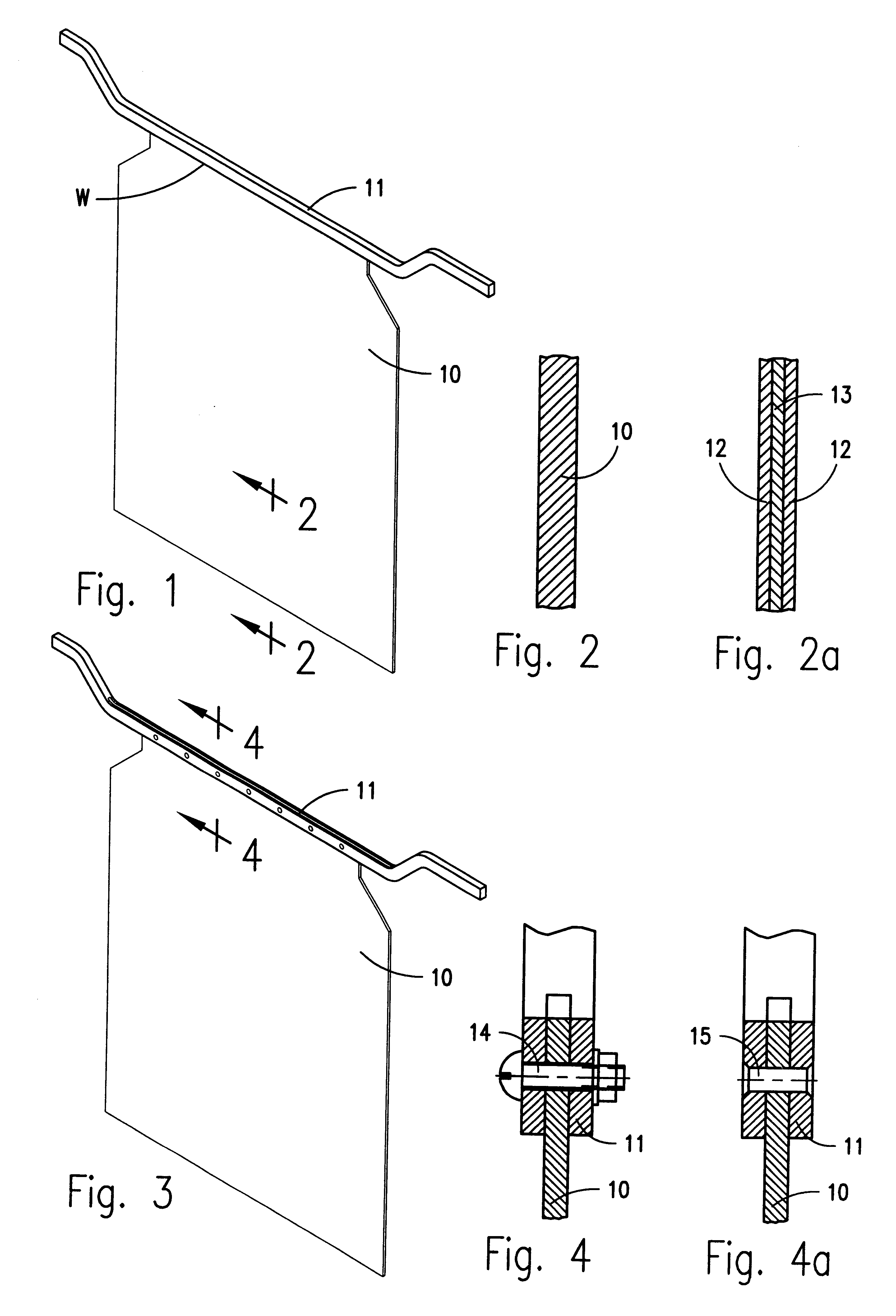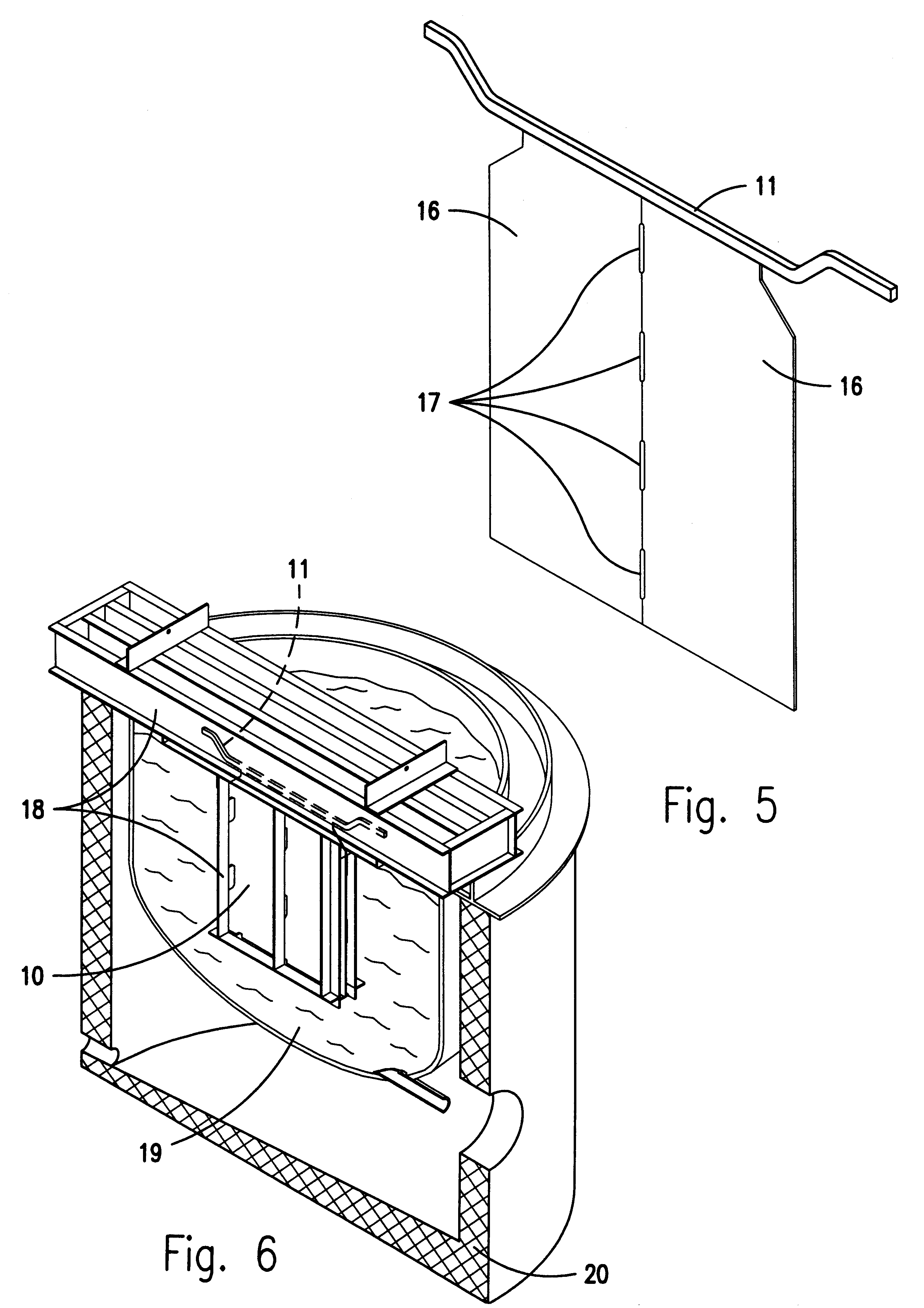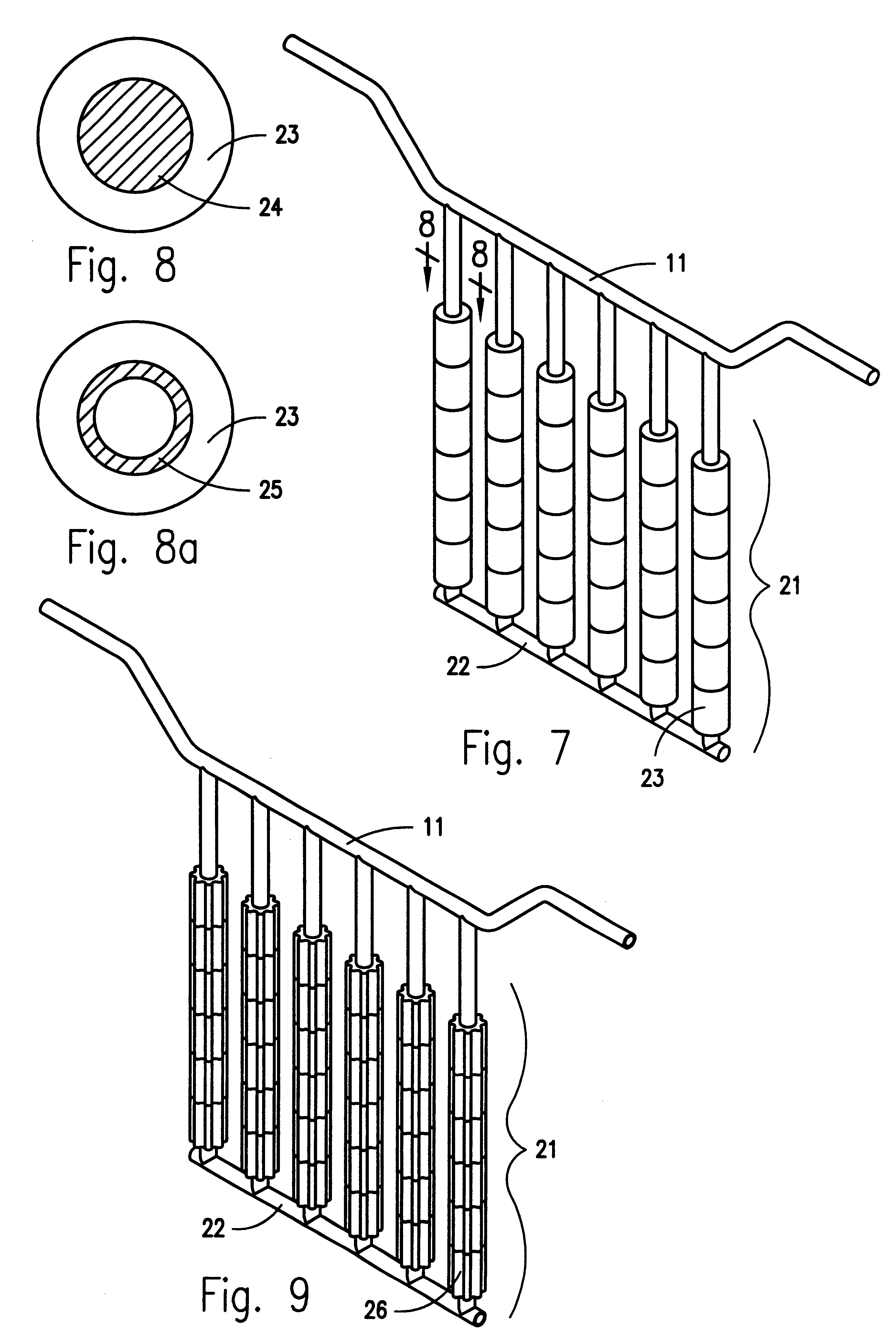Insoluble titanium-lead anode for sulfate electrolytes
a lead alloy anode and titanium-lead anode technology, which is applied in the direction of electrowinning process, solid-state diffusion coating, electrochemical machining apparatus, etc., can solve the problems of insufficient purity of copper obtained by electrowinning using lead alloy anodes, excessive wear, and difficulty in obtaining lead alloy anodes for metal electrowinning, etc., to achieve higher mechanical strength, reduce weight, and prolong service life
- Summary
- Abstract
- Description
- Claims
- Application Information
AI Technical Summary
Benefits of technology
Problems solved by technology
Method used
Image
Examples
eighth embodiment
The eighth embodiment consists of pressing of the plate from the mixture of titanium and lead powders with a lead core and then attachment of the hanger bar and cleaning.
Along with hot pressing, the alternate processes of consolidation can be employed, for example, hot rolling; cold rolling or cold pressing and following sintering, etc. Infiltration of the porous plates may be also performed by alternate methods, without immersion into the molten lead bath. Cleaning and attachment of the hanger bar steps might be reversed.
Thus, it can be seen, when referring to eight embodiments involving plate anodes, they comprise four general processes to begin the manufacturing; namely,
1. Consolidation of the titanium powder to make a plate of definitive size and structure.
2. Consolidation of the titanium powder on a titanium or lead core.
3. Consolidation of the mixture of titanium and lead powders; or lastly
4. Consolidation of the mixture of titanium and lead powders on a titanium or lead core....
second embodiment
A second embodiment is cold pressing of the bushings from the titanium powder, stringing of the bushings on the titanium core, sintering of the strings with bond formation between the bushings and the core, attachment of the strings to the connecting bars, infiltration of the formed lattice with lead and cleaning.
third embodiment
A third embodiment is cold pressing of the bushings from the titanium powder, stringing of the bushings on the titanium core, attachment of the strings to the connecting bars, sintering of the lattice and bond formation between the bushings and the core, infiltration of the lattice with lead and cleaning.
PUM
| Property | Measurement | Unit |
|---|---|---|
| current densities | aaaaa | aaaaa |
| temperature | aaaaa | aaaaa |
| current density | aaaaa | aaaaa |
Abstract
Description
Claims
Application Information
 Login to View More
Login to View More - R&D
- Intellectual Property
- Life Sciences
- Materials
- Tech Scout
- Unparalleled Data Quality
- Higher Quality Content
- 60% Fewer Hallucinations
Browse by: Latest US Patents, China's latest patents, Technical Efficacy Thesaurus, Application Domain, Technology Topic, Popular Technical Reports.
© 2025 PatSnap. All rights reserved.Legal|Privacy policy|Modern Slavery Act Transparency Statement|Sitemap|About US| Contact US: help@patsnap.com



